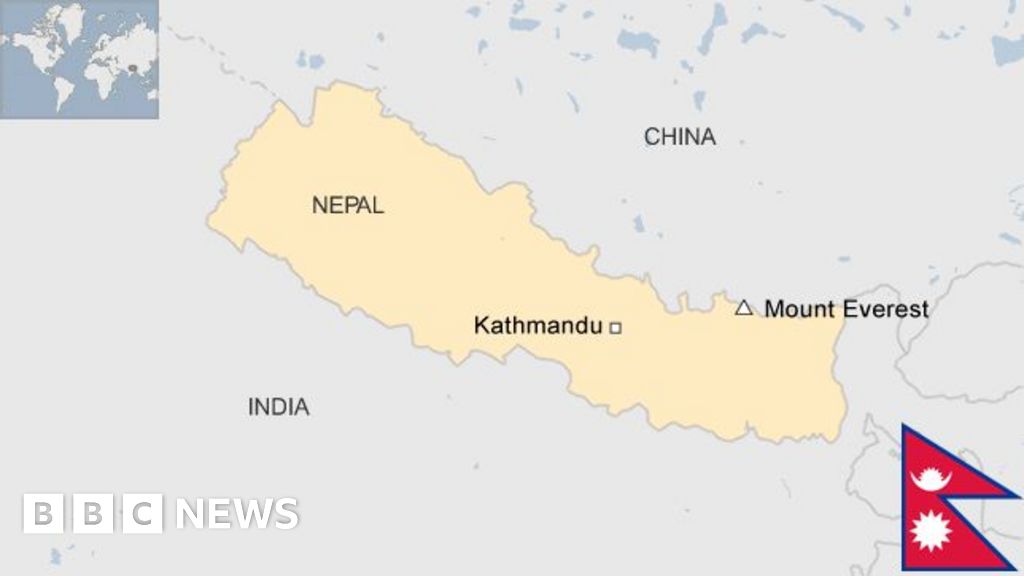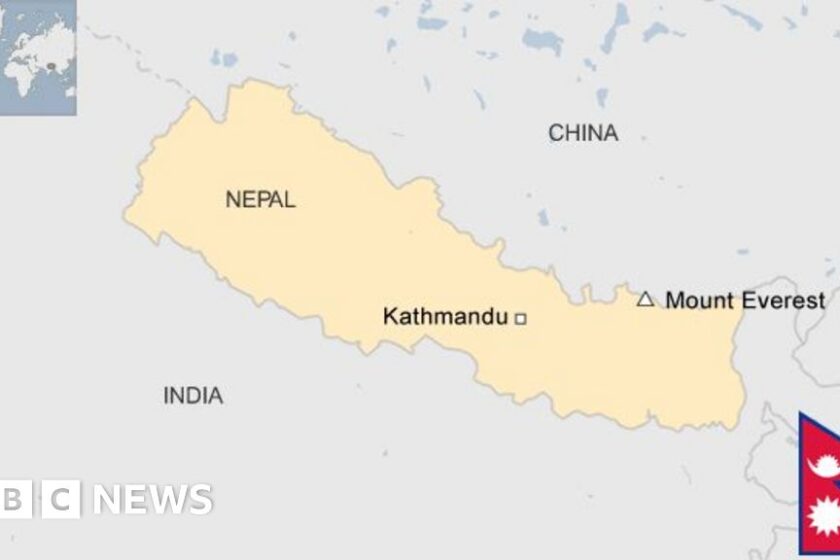Nepal’s Current Government Structure is a fascinating topic that sheds light on the kind of government in place in Nepal today. With a friendly tone, this article aims to provide you with a brief yet comprehensive understanding of the government system in the beautiful country of Nepal.
By exploring the intricacies of Nepal’s current government structure, we hope to provide you with insightful knowledge about the way this vibrant nation is governed. From the executive to the legislative branches, this article will break down the essentials, empowering you to grasp the governing dynamics of Nepal.
Nepal’s government structure and its significance
Nepal, a landlocked country located in South Asia, has undergone significant political transformations in recent years. After years of political instability and a decade-long civil war, Nepal adopted its current constitution in 2015, marking a significant milestone in the country’s political history.
The government structure of Nepal plays a crucial role in ensuring stability, democracy, and effective governance in the nation. It provides a framework for the distribution of power, representation of diverse voices, and the establishment of a three-tier government system. This comprehensive article aims to delve into the constitution of Nepal, the three-tier government structure, and the functioning of each branch within the federal, provincial, and local levels.
Constitution of Nepal
Adoption of the current constitution
The current constitution of Nepal was adopted on September 20, 2015, by the Constituent Assembly. This historic event came after years of deliberation and intense discussions among political parties and stakeholders. The constitution paved the way for Nepal to transition from a unitary to a federal system, aiming to provide equitable representation and empower the diverse communities within the country.
Characteristics of the constitution
Nepal’s constitution is characterized by several essential elements. It enshrines fundamental rights and freedoms, democratic principles, and the rule of law. It also emphasizes the principles of social justice, inclusivity, and secularism. The constitution recognizes Nepal as a multi-ethnic, multi-religious, and pluralistic society, placing great importance on unity, diversity, and harmonious coexistence.
Separation of powers
The constitution of Nepal establishes a clear separation of powers among the three branches of government: the executive, legislative, and judicial branches. This separation ensures a system of checks and balances, preventing the concentration of power in a single entity and safeguarding the democratic principles upon which the nation is built.

Three-tier Government
Federal government
At the apex of Nepal’s government structure is the federal government. It is responsible for matters of national importance, such as defense, foreign affairs, and national planning. The federal government consists of three branches: the executive, legislative, and judicial branches.
Provincial government
Below the federal government is the provincial government, which represents the interests of specific geographic regions within Nepal. The provincial government consists of an executive branch, led by a Chief Minister, a legislative assembly, and the necessary administrative bodies to ensure effective governance within the provinces.
Local government
Operating at the grassroots level, the local government in Nepal plays a vital role in decentralizing power and empowering local communities. It comprises local bodies, including village councils and municipalities, which are responsible for delivering essential services and addressing the needs of the local population.
Federal Government
Executive branch
The executive branch of the federal government is responsible for implementing laws and policies. It consists of the President, the Prime Minister, and the Council of Ministers. The executive branch collaborates with the legislative and judicial branches to ensure effective governance and decision-making on matters of national importance.
Legislative branch
The legislative branch, known as the Federal Parliament, is responsible for enacting laws and representing the interests of the Nepali people at the national level. It comprises two houses: the Rashtriya Sabha (National Assembly) and the Pratinidhi Sabha (House of Representatives). The Federal Parliament plays a crucial role in shaping policies, ensuring accountability, and safeguarding the interests of the nation as a whole.
Judicial branch
The judicial branch, led by the Supreme Court of Nepal, is responsible for interpreting laws, ensuring justice, and safeguarding the constitution. The Supreme Court acts as the final appellate court and is responsible for resolving legal disputes, protecting individual rights, and upholding the principles of justice and fairness.
Executive Branch
President
The President is the ceremonial head of state and represents Nepal at the national and international levels. The President’s role is primarily symbolic, but they play a significant role in promoting national unity, upholding the constitution, and acting as a guardian of democratic values.
Prime Minister
The Prime Minister, appointed by the President, serves as the head of government and exercises executive powers. They are responsible for leading the Council of Ministers, formulating policies, and overseeing the implementation of government programs. The Prime Minister plays a pivotal role in shaping the national agenda and representing the interests of the people.
Council of Ministers
The Council of Ministers consists of ministers appointed by the Prime Minister to ensure the efficient functioning of the government. Each minister is responsible for a specific portfolio and works towards achieving the government’s objectives in their respective areas of expertise. The Council of Ministers meets regularly to discuss and decide on important matters of governance.
Legislative Branch
Federal Parliament
The Federal Parliament is the legislative body at the national level and is responsible for making laws, reviewing existing legislation, and providing oversight of the executive branch. It consists of two houses: the Rashtriya Sabha (National Assembly) and the Pratinidhi Sabha (House of Representatives). The Federal Parliament represents the voice of the people and ensures that their interests and concerns are addressed through the legislative process.
Rashtriya Sabha (National Assembly)
The Rashtriya Sabha, also known as the National Assembly, is the upper house of the Federal Parliament. It consists of members representing each province of Nepal and ensures that regional interests are adequately represented at the national level. The National Assembly plays a critical role in safeguarding federal principles and promoting harmonious relations between different provinces.
Pratinidhi Sabha (House of Representatives)
The Pratinidhi Sabha, commonly referred to as the House of Representatives, is the lower house of the Federal Parliament. Its members are elected through a direct electoral system, reflecting the will of the people. The House of Representatives deliberates on various matters, including budgetary allocations, policy debates, and other legislative affairs.
Judicial Branch
Supreme Court
The Supreme Court of Nepal serves as the apex judicial body, interpreting the constitution and ensuring the rule of law in the country. It is responsible for adjudicating disputes, upholding individual rights, and safeguarding the principles of justice. The Supreme Court’s decisions have far-reaching implications and contribute significantly to the overall legal framework in Nepal.
Hierarchy of courts
In addition to the Supreme Court, Nepal has a hierarchical system of courts at various levels. This includes appellate courts, district courts, and specialized courts that cater to specific areas of law. This wide network of courts ensures access to justice and guarantees that legal disputes can be resolved effectively and efficiently at different levels.
Provincial Government
Governor
At the provincial level, each province has a Governor appointed by the President. The Governor acts as the representative of the federal government within the province, ensuring coordination and cooperation between the federal and provincial governments. They play a crucial role in maintaining law and order, protecting the constitution, and promoting harmonious relations.
Chief Minister
The Chief Minister is the head of the provincial government and is responsible for the overall governance and administration of the province. The Chief Minister, along with the Council of Ministers, formulates and implements policies that cater to the specific needs and aspirations of the province’s population. They work closely with the federal government to address provincial concerns and ensure effective cooperation.
Provincial Assembly
The provincial assembly comprises elected representatives who discuss and decide on matters pertaining to the province. It plays a pivotal role in enacting laws, overseeing the executive branch’s functioning, and representing the interests of the province. The provincial assembly provides a platform for deliberation and consensus-building on matters relevant to their respective regions.
Local Government
Local bodies
Nepal’s local government system consists of local bodies responsible for governance and service delivery at the grassroots level. These bodies, such as village councils and municipalities, are primarily responsible for addressing the day-to-day needs of the local population. They ensure the provision of essential services, infrastructure development, and grassroots-level decision-making, thereby empowering local communities.
Village councils
Village councils play a crucial role in rural areas of Nepal, where they serve as the primary administrative unit. They are responsible for local governance, infrastructure development, social welfare, and coordinating with higher levels of government. Village councils provide a platform for active citizen participation and enable local communities to voice their concerns, contribute to decision-making processes, and shape their development agenda.
Municipalities
Municipalities, on the other hand, are responsible for urban areas. They cater to the needs of densely populated urban centers, ensuring effective governance and service delivery. Municipalities play a critical role in planning, zoning, and managing urban areas, promoting sustainable development practices, and providing essential services to urban residents.
Conclusion
Nepal’s current government structure, established through its constitution, has been instrumental in ensuring stability, promoting inclusivity, and advancing democracy within the nation. The three-tier government system, encompassing the federal, provincial, and local levels, has allowed for the equitable distribution of power and representation of diverse voices.
However, like any system, Nepal’s government structure faces potential challenges. These challenges include effectively implementing federalism, addressing regional disparities, and ensuring coordination between different branches and levels of government. With continued efforts, collaboration, and learning from past experiences, Nepal’s government structure holds immense potential for shaping a prosperous and inclusive future for the nation and its people.

